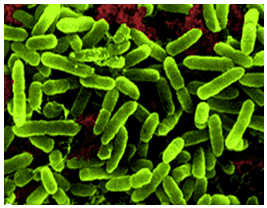Table of Contents

The applicability of electrochemical techniques in the elucidation of intermediate reactions in the bacterial oxidation of cadmium sulfide minerals has been demonstrated. Furthermore, it was found that the bio-oxidation process was solid-state diffusion controlled.
Greenockite (CdS) and hawleyite (CdS) are the most important cadmium minerals, which occur as minor constituents in ores of zinc, lead and copper sulfide. Therefore, cadmium is always recovered as byproduct of the extraction of these metals . Cadmium is recovered as a byproduct of zinc processing and from recycling of nickel-cadmium batteries alloys and industrial wastes. Cadmium is mainly used in batteries, coatings and platings, pigments, plastics and synthetic products, as well as in alloys.
The literature of bacterial leaching of cadmium sulfide is limited to a few preliminary studies. Cadmium solubilization from zinc sulfide was found to be 5 to 8 times faster by T. ferrooxidan relative to the sterile controls. Scientists reported on pure cadmium sulfide leaching in presence of elemental sulfur by Thiobacillus thiooxidans. The best leaching conditions resulted in cadmium extractions as high as 72%, while in the sterile controls only 13% cadmium extraction was achieved. It was found that the rate (V=dM²+/dt) of metal sulfide (MS) oxidation was proportional to the solubility product (Ksp):
V = cKsp = c[M²+][S²-]………………………………………………………..(1)
where c is a proportionality constant. The bacteria are known to remain in close contact with the mineral surface where dissociation of MS takes place according to the solubility product:
MS = M²+ + S²……………………………………………………………….(2)
The released sulfide ion is then quickly oxidized to sulfuric acid by the bacteria:
![]()
As a consequence, Equation (2) is shifted to the right, and further dissociation takes place. Theoretically this process may last until the complete dissolution of metal sulfate is achieved. However, in practice this is never the case, since upon accumulation of reaction products (M²+, H+) bacterial activity is inhibited. The following order of dissolution rates of metal sulfides have been reported : NiS > CoS > ZnS > CdS > CuS > Cu2S.
The overall reaction of cadmium sulfide oxidation by T. ferrooxidans can be expressed as:
CdS + 2 O2 = CdSO4………………………………………………………..(4)
The Eh-pH diagrams are useful tools to gain information about the stable species (initial reactant and final products) of the oxidation reaction. However, these do not provide information on the intermediate reactions which may occur during the leaching process. The knowledge about the intermediate reactions is particularly important, because some of them may control the rate of the overall metal extraction. The cyclic voltammetric techniques were reported to be useful in generating the desired information.

In general, the leaching kinetics of metal sulfides is often described by methods which are based on metal corrosion. However, most naturally occurring metal sulfides are semiconductors rather than conductors. Therefore, a better approach to the kinetic description of metal sulfide leach phenomena could be realized by using methods that are based on the solid-state properties of semiconductor minerals.
Cadmium sulfide occurs in two polytype hexagonal (greenockite)and cubic (hawleyite) mineral structures, which are shown in Figure 1. The pure CdS has a large energy gap (Eg): 2.5 eV and a relatively low solubility:
Kap = [Cd²+][S²] = 10 25.76…………………………………………………(5)
The naturally occurring CdS mineral is never perfect. It has many crystal defects, cadmium can also be replaced by other metal ions. Therefore, it may have excess of negative charge (n-type semiconductor) or excess of positive charge (p-type semiconductor). Figure 2 illustrates the molecular orbital energy diagram for n-type CdS. The bottom of the conduction band is primarily derived from cadmium 4p atomic orbitals with antibonding admixture of sulfur 3s orbitals, while the top of valence band is deduced from the sulfur 3p orbitals with bonding admixture of cadmium 4p and 4s orbitals. This presentation can also be obtained from the chemical bonding of an ionic model, in which, the conduction band is associated with the cation (Cd²+) and the valency band with the anion (S2).

The present study reports on the existence of intermediate reactions involved in the sulfuric acid – containing bacterial leaching of cadmium sulfide minerals (hawleyite and greenockite) using different electrochemical techniques.
Bacteria
A culture of T. ferrooxidans used in this research work was originally isolated from copper mine drainage. It was routinely maintained in our laboratory on a modified nutrient medium, in which, the ferrous sulfate energy source was replaced by cadmium sulfide minerals. When bacterial growth reached the late logarithmic phase, a portion of the leach suspension was used as experimental inoculum or stored at 4°C to maintain the stock culture. The stock culture was renewed on a monthly basis.
Bacterial Leaching Experiments
All leaching experiments were carried out in 250 ml Erlenmeyer flasks containing 1.5 g CdS (greenockite or hawleyite), 70 ml iron free nutrient medium (pH = 2.3) and 5 ml inoculum of T. ferrooxidans. In the sterile controls 5 ml of a 2% thymol in methanol solution was added to the leach suspension instead of the bacterial inoculum. The flasks were incubated at 35°C on a New Brunswick Environmental Incubator shaker, model G26 and agitated at constant 250 rpm. In predetermined time intervals, the water lost was compensated with distilled water, and when the pH of the leach suspension increased above 2.5, it was adjusted to pH 2.3 with 1 N sulfuric acid. A one ml volume of clear liquid sample was periodically removed from the flasks and analyzed for dissolved cadmium on a Perkin Elmer Atomic Absorption Spectrophotometer, model 700. The one ml samples were replaced with an equal volume of iron free nutrient medium.

